Give the gift of membership
The recipient will enjoy all of the individual benefits for 12 months
Benefits of Membership
Texas Native Plants Magazine
Members receive a free subscription to our quarterly full color magazine, with in depth articles about using Texas native plants in your garden. Get exclusive information you cannot find anywhere else.
Exclusive Access and Discounts
Be Part of a Community
Be part of a statewide community with thousands of members. At local chapters across the state you can join other members on field trips, garden tours, plant sales, classes, social events, and much more.
Why your membership matters
“Native plants give us a sense of where we are in this great land of ours. I want Texas to look like Texas and Vermont to look like Vermont.” ~ Lady Bird Johnson
As a member of the Native Plant Society of Texas, your dues provide invaluable support for the mission to promote the conservation, research, and utilization of native plants and plant habitats of Texas through education, outreach, and example. Here is an overview of benefits, programs, and the ways your dues are used to support the Society.
Benefits for Members
- Subscription to the quarterly magazine, Texas Native Plants (digital and print versions available).
- Discounted registration fees for classes, the Society’s Spring and Fall Symposia, and various sponsored events.
- A statewide community united in a common mission to promote the benefits of native Texas plants.
- The option to join a chapter in your area and meet like-minded individuals to help deepen your appreciation for native Texas plants.
Statewide Projects and Programs
- Spring and Fall Symposia held throughout the Texas in conjunction with the annual members’ meeting. These include presentations, exhibits, field trips, and workshops that highlight the ecoregion in which they are held.
- Annual Awards, Honors, and Contests
- Partnership with H-E-B and Texas Parks & Wildlife to provide native plants at stores around the state.
- NICE Native Plant Partner collaborations with local nurseries around the state
- Bring Back the Monarchs to Texas and the I-35 Monarch Waystations
- Ann Miller Gonzalez Graduate Research Grant
Dr. Alfred Richardson and Kate Hillhouse Scholarships - Native Landscape Certification Program
- Native Plants in Schools – School Garden Starter Guide, Curriculum, Activities, Recommended Book Lists,
- Garden Grants
- Native Seed Libraries across the state
Our organization is overwhelmingly supported by volunteers around the state and is rated as a GuideStar Platinum Transparency organization.
How the Native Plant Society of Texas uses membership dues
- Floral licenses for Chapters used for plant sales
- Print cost and postage for the quarterly magazine
- Maintenance of the website and various online accounts
- Grants, scholarships, and recognition awards
- Salaries for the Executive Director, State Accountant, Membership Coordinator, and an Administrative Assistant
- Administrative costs for the Society, like IRS reports and liability insurance
Membership Levels
Individual
Enjoy all our member benefits as an individual, joining up to 2 chapters. You may also join as an “at-large” member if you do not have a home chapter. All membership dues are annual.
Home Chapter
$50
Two Chapters
$65
Family
Your entire household (up to 5 people) can enjoy all our member benefits in up to 2 chapters. You may also join as an “at-large” member if you do not have a home chapter. All membership dues are annual.
Home Chapter
$60
Two Chapters
$75
Senior
Seniors can enjoy all our member benefits, joining up to 2 chapters at a reduced cost, with 1 or 2 members of your household enjoying all our member benefits. All membership dues are annual.
Home Chapter
$35
Two Chapters
$50
Limited Income
People with limited income can enjoy all our member benefits, joining up to 2 chapters at a reduced cost, with 1 or 2 members of your household enjoying all our member benefits. All membership dues are annual.
Home Chapter
$35
Two Chapters
$50
Student
Students can enjoy all our individual member benefits at a reduced cost. All membership dues are annual.
Home Chapter
$15
Membership Help
Give a Gift Membership
To purchase a NPSOT Individual Membership as a gift, place your order online here and your recipient will receive an immediate notification email upon submission, followed by the standard new membership packet by mail. Note Gift memberships are for other people, not yourself.
Renew Membership
If you are a current member, or a former member who has been active since 2018, you already have a NPSOT account in our membership database. Please do not create a new account! Click here to log in to the member portal for renewal, or to rejoin.
If you forgot your login name or email, or have not set up a login and password, just click “Help with my account” to receive instructions to reset your password or create a login and password.
If your membership has not been active since 2018, click here to rejoin.
Join By Mail
If you would prefer to renew by mail, you can access that form here.
Members at Large
Depending on your membership level, you may add one additional chapter. If you do not wish to select a Home Chapter, you can designate yourself a “member-at-large”.
Membership Coordinator
If you have any questions about your membership, including your membership dates, please reach out to our Membership Coordinator.



